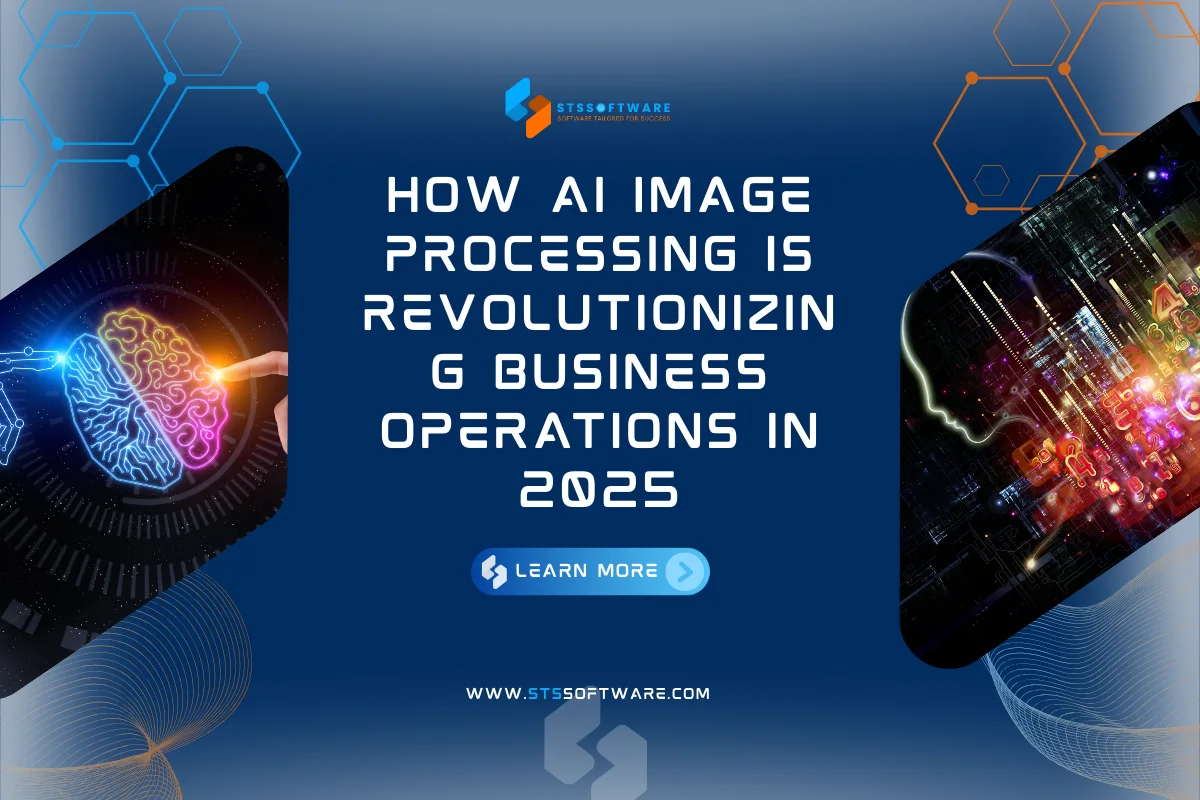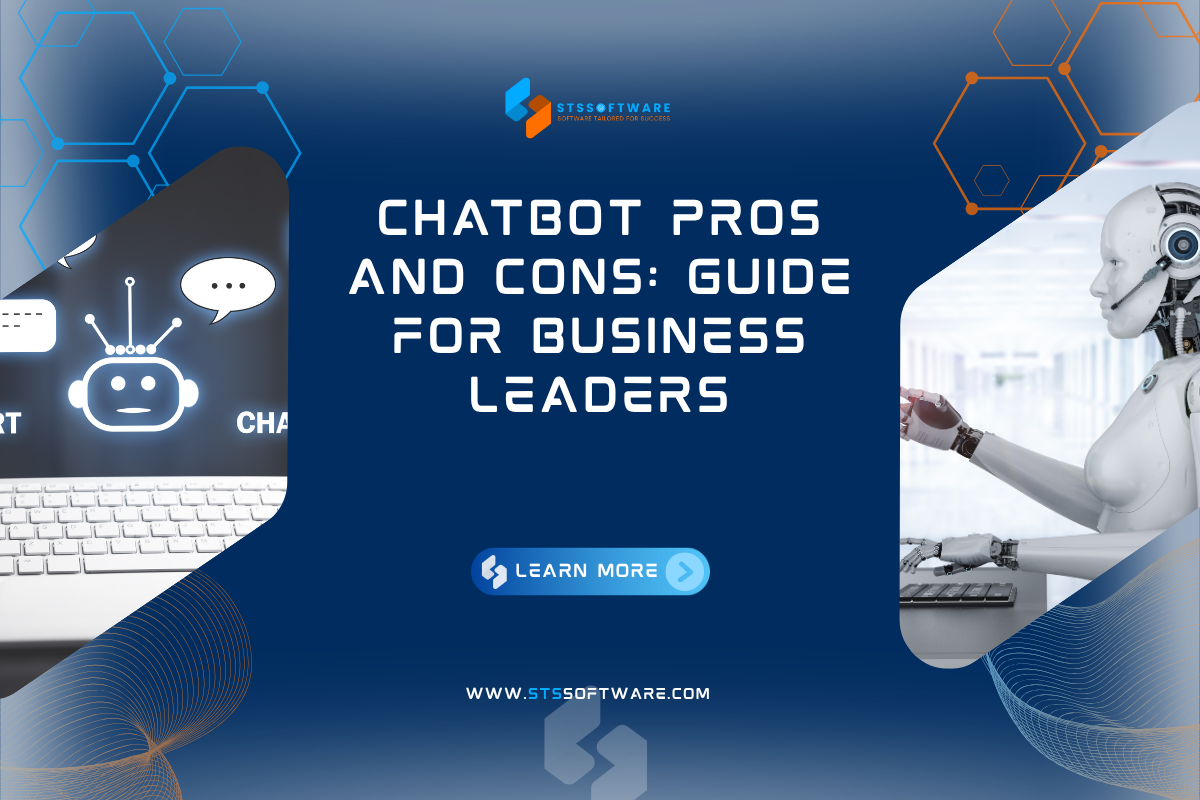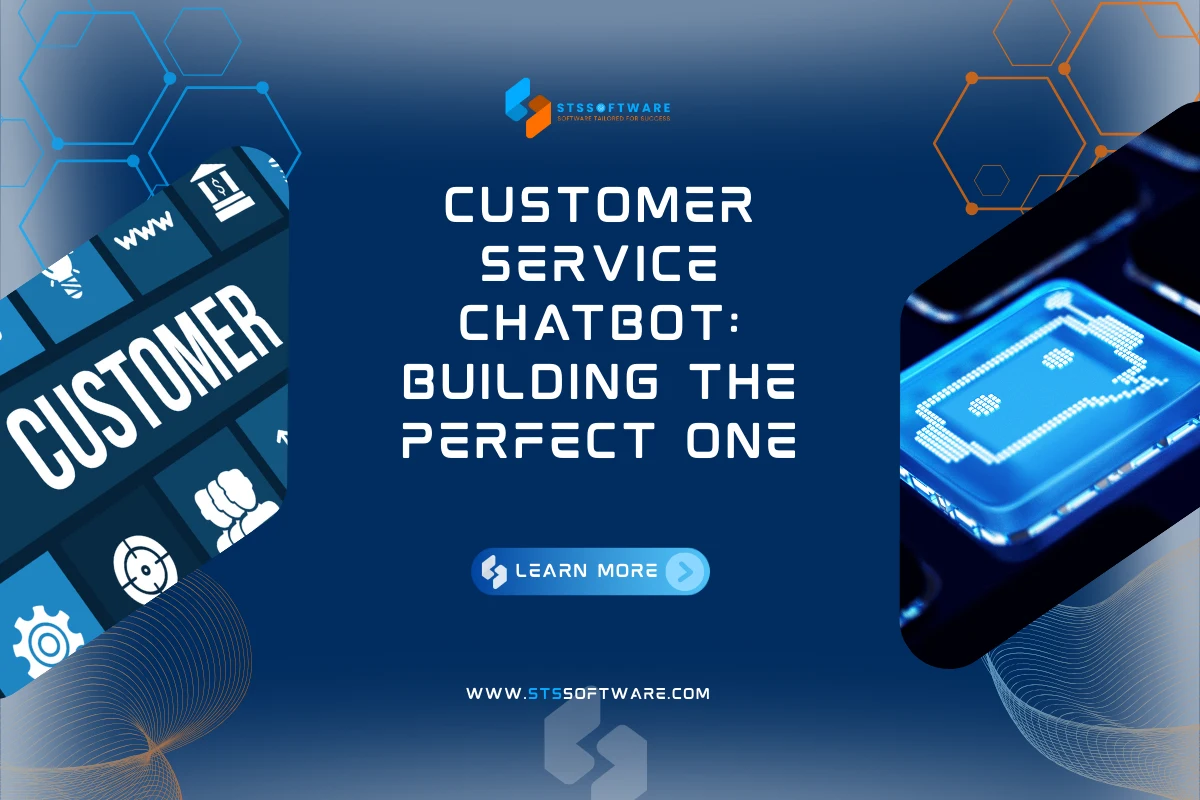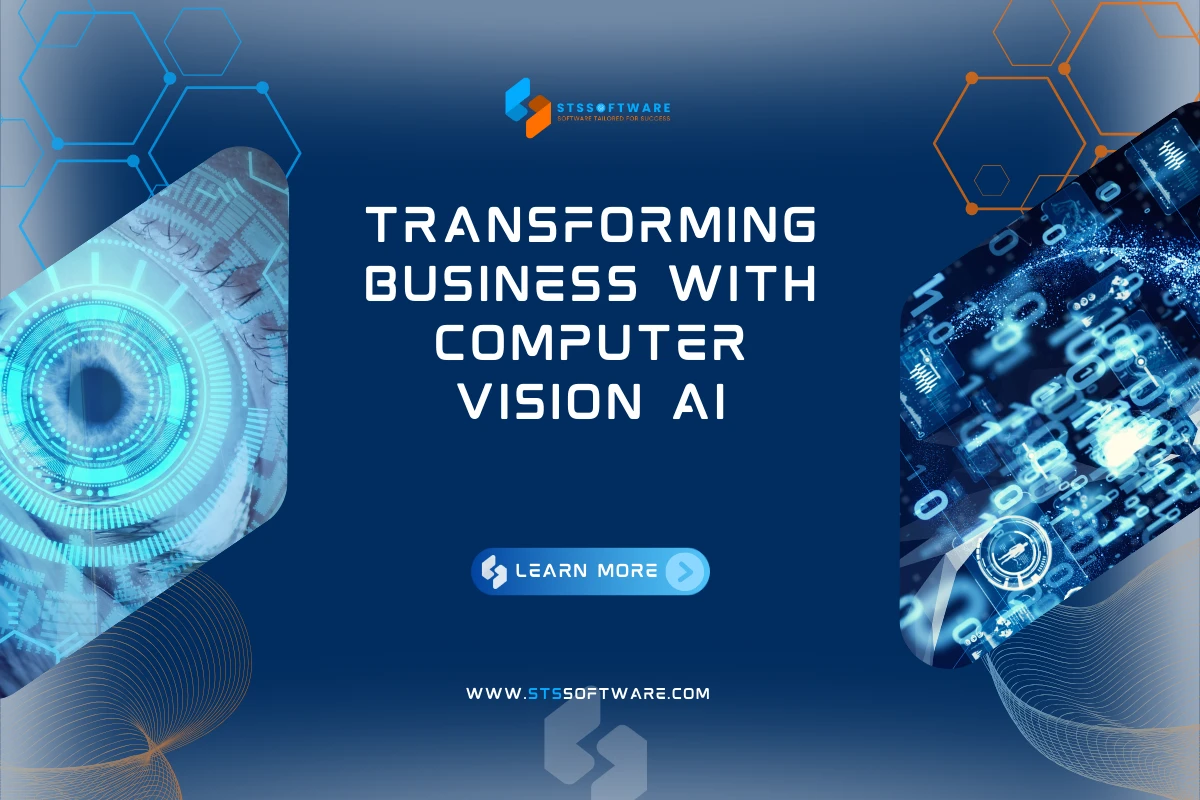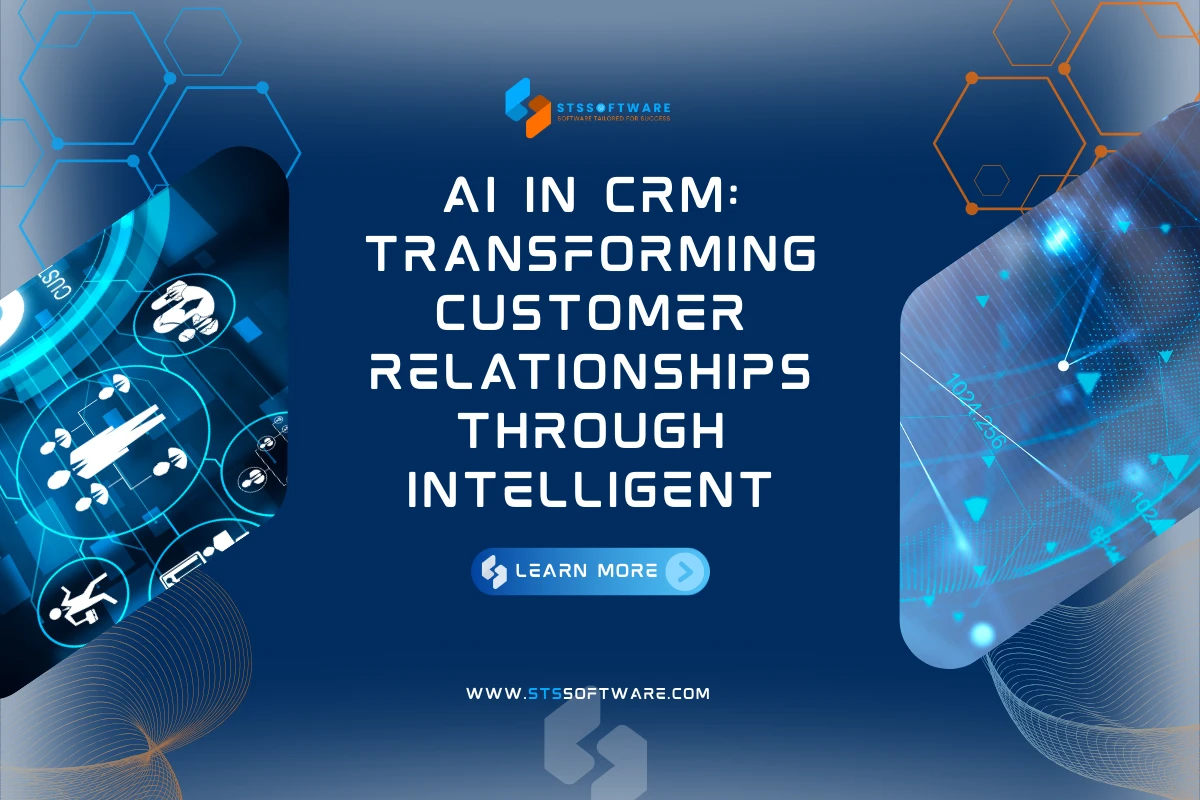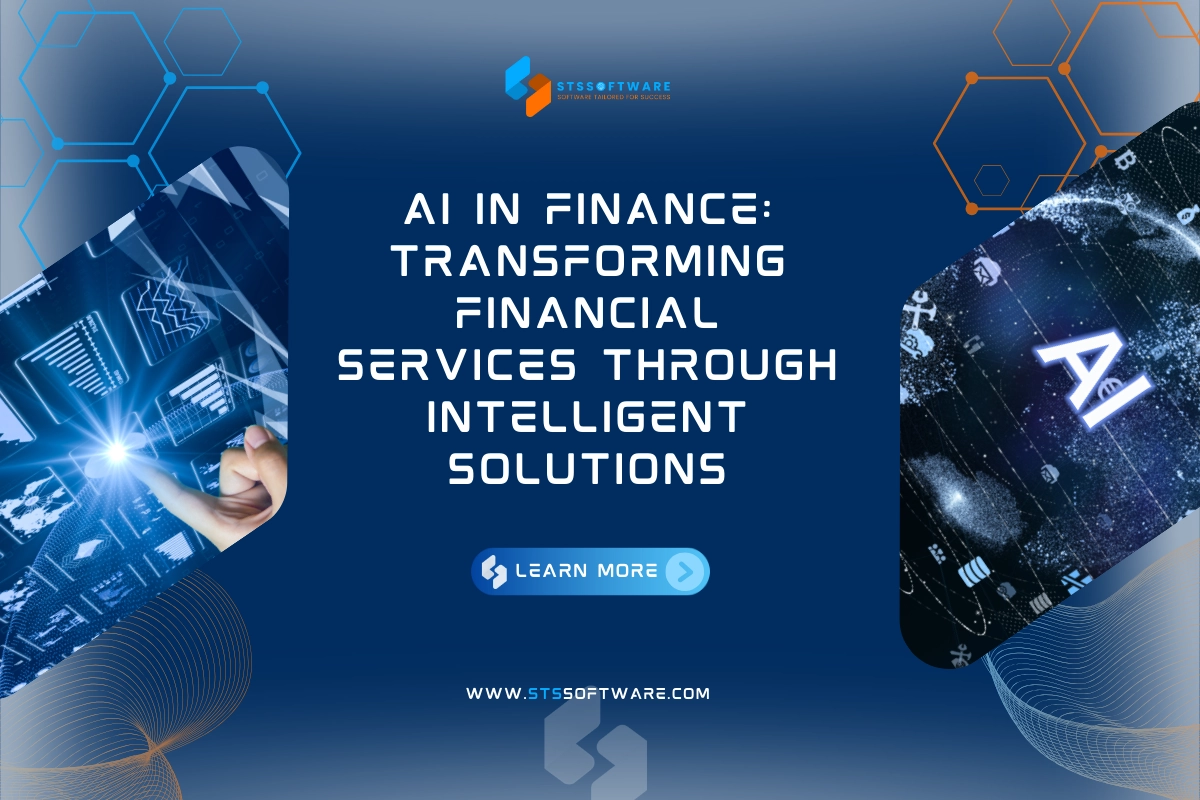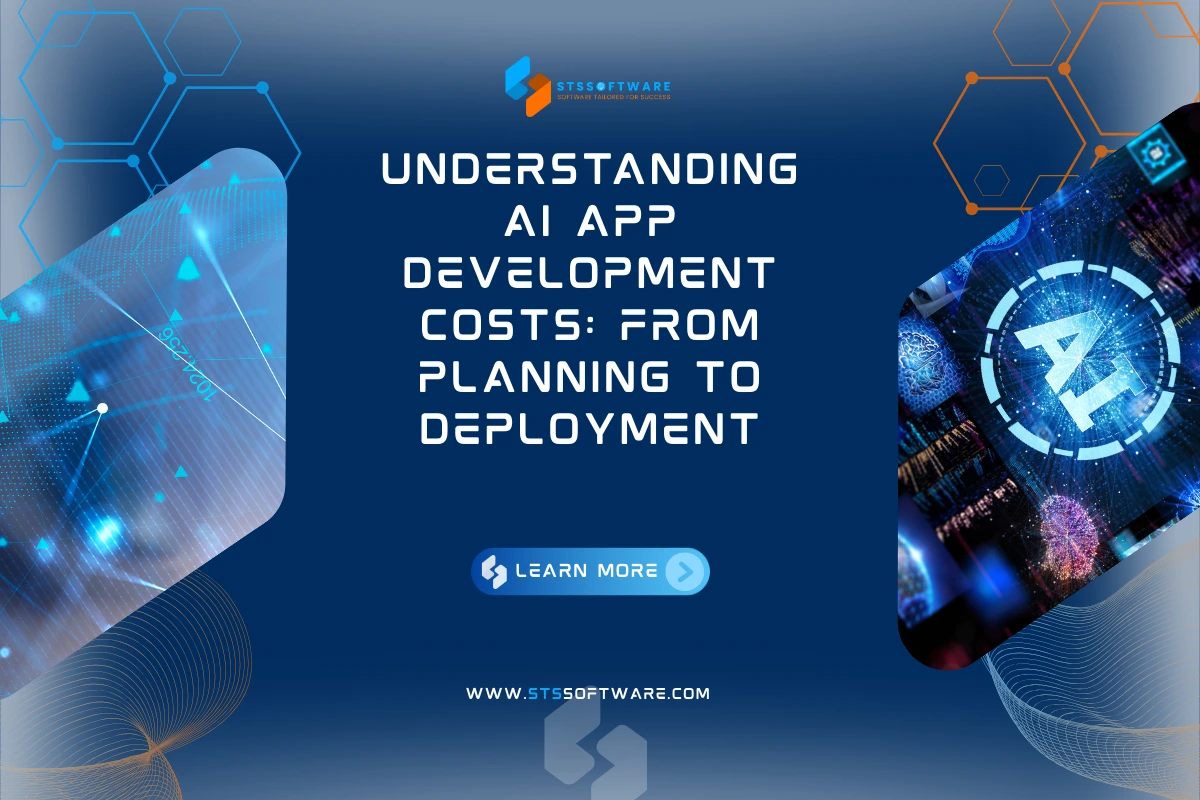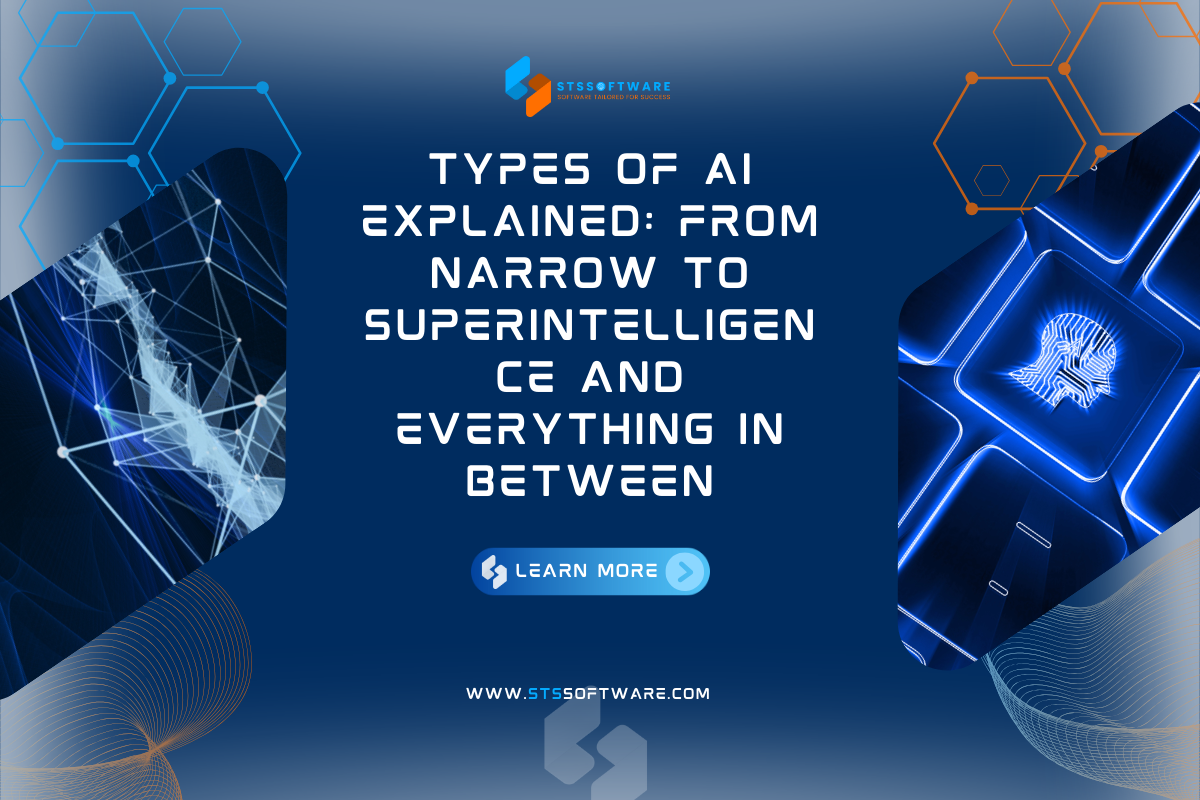The rapid development of smart technology is reshaping the entire modern business operation, in which the ability to process image data through artificial intelligence stands out. AI image processing – or artificial intelligence in image processing – is not simply an image recognition technology but also a strategic tool to help businesses improve operational efficiency. From product quality control, supply chain monitoring to improving customer experience, business automation with AI through image processing is opening a new era of accuracy, speed and efficiency.
In this article, we will explore how different industries – from manufacturing, retail to healthcare – are applying AI image processing to automate manual tasks, mine image data into valuable insights and drive business innovation.
Understanding AI Image Processing Fundamentals
AI image processing is a breakthrough compared to traditional image processing techniques. If in the past, image processing mainly relied on manually programmed algorithms to filter, analyze or identify details in images, now, artificial intelligence and image processing allow computers to “learn” from data and automatically understand and analyze images with much higher accuracy.
Image processing in AI takes advantage of the power of core technologies such as neural networks, deep learning and computer vision to simulate the way humans see and interpret images. Thanks to deep learning models, AI can recognize faces, read handwriting, analyze expressions, detect objects or anomalies in images without the need for detailed programming of each step.
The important difference between AI image processing and traditional image processing is the ability to adapt and learn continuously. For example, in the medical industry, AI can “learn” from millions of X-ray images to help diagnose diseases more accurately. In the manufacturing industry, AI can detect microscopic defects on the production line in a split second – something that humans find difficult to do at high speed.
In short, artificial intelligence and image processing are not simply technological advances, but also the foundation for a completely new approach to mining and understanding image data in every area of modern business.
Core Technologies Behind AI Image Processing
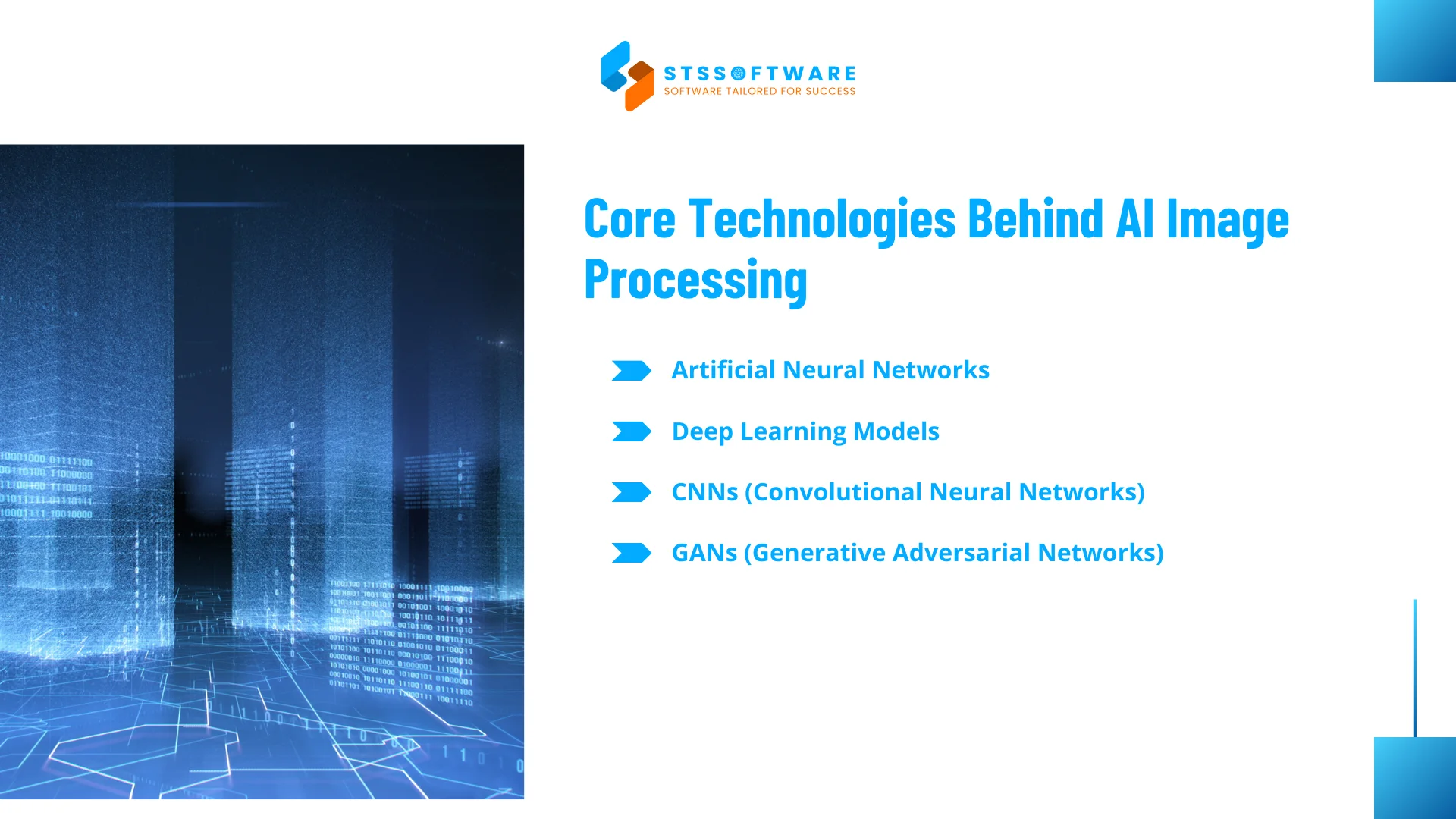
The development of artificial intelligence in image processing is built on the foundation of many advanced technologies, notably artificial neural networks and modern deep learning models such as CNNs (Convolutional Neural Networks) and GANs (Generative Adversarial Networks). These are architectures that help computers “see” and understand images in a way that is similar to humans – but faster, more accurate, and capable of processing on a large scale.
Previously, image processing often relied on manual rules (rule-based), requiring programmers to identify each specific feature such as color, edge, brightness, etc. However, with AI for image processing, systems can now automatically learn from large data, identify and classify images without having to write detailed code for each case.
For example, a study from Google Health showed that an AI system using CNNs was able to detect diabetic retinopathy with the same accuracy as a specialist, based on images of a patient’s retina.
Another example comes from Nvidia, where GANs were used to create high-quality simulated images for training machine vision systems in the absence of real-world data. This helps increase accuracy when deployed in real-world applications such as manufacturing or healthcare.
In short, the combination of AI and image processing with advanced deep learning architectures is opening up entirely new directions, changing the way businesses process and analyze image data – from automating quality monitoring, medical analytics to personalizing user experiences.
How Businesses Are Leveraging AI Image Processing Today
And these aren’t just the captures of companies; every sector is doing constant operations with artificial intelligence image processing for optimizing operation, saving costs, and enhancing customer experience-the new interest in artificial intelligence image processing is of course in business operations, with its application so far ranging from manufacturing and healthcare, retail-to-security.
Artificial intelligence systems are now being employed in the manufacturing industry to ensure quality of products by picture. For example, Siemens uses AI picture processing to automatically detect microscopic defects on its electronic component production line – a task that requires high precision and is easily overlooked by humans.
In the medical field, many hospitals use artificial intelligence image processing to support image diagnosis. For instance, image analysis via CT and MRI scans can detect early signs of brain or lung cancer and even abnormal tumors with high accuracy in a fraction of the time that it would take a highly qualified radiologist to do it manually.
With its smart cameras, AI is now being used by big retailers such as Amazon to track inventory within retail outlets as well as analyze customer expressions and behaviors during shopping to personalize the experience while shopping in-store.
In the security domain, facial recognition, abnormal behavior detection, and real-time alerts about risks have powered the AI-based surveillance systems. At Changi Airport (Singapore), AI picture processing helps enhance security control while ensuring a smooth passenger experience.
In short, AI processing images is not just an auxiliary technology but is becoming an essential tool in the digital transformation strategy of modern businesses, helping them solve practical problems more intelligently and effectively.
5 Transformative Applications of AI Image Processing in Business
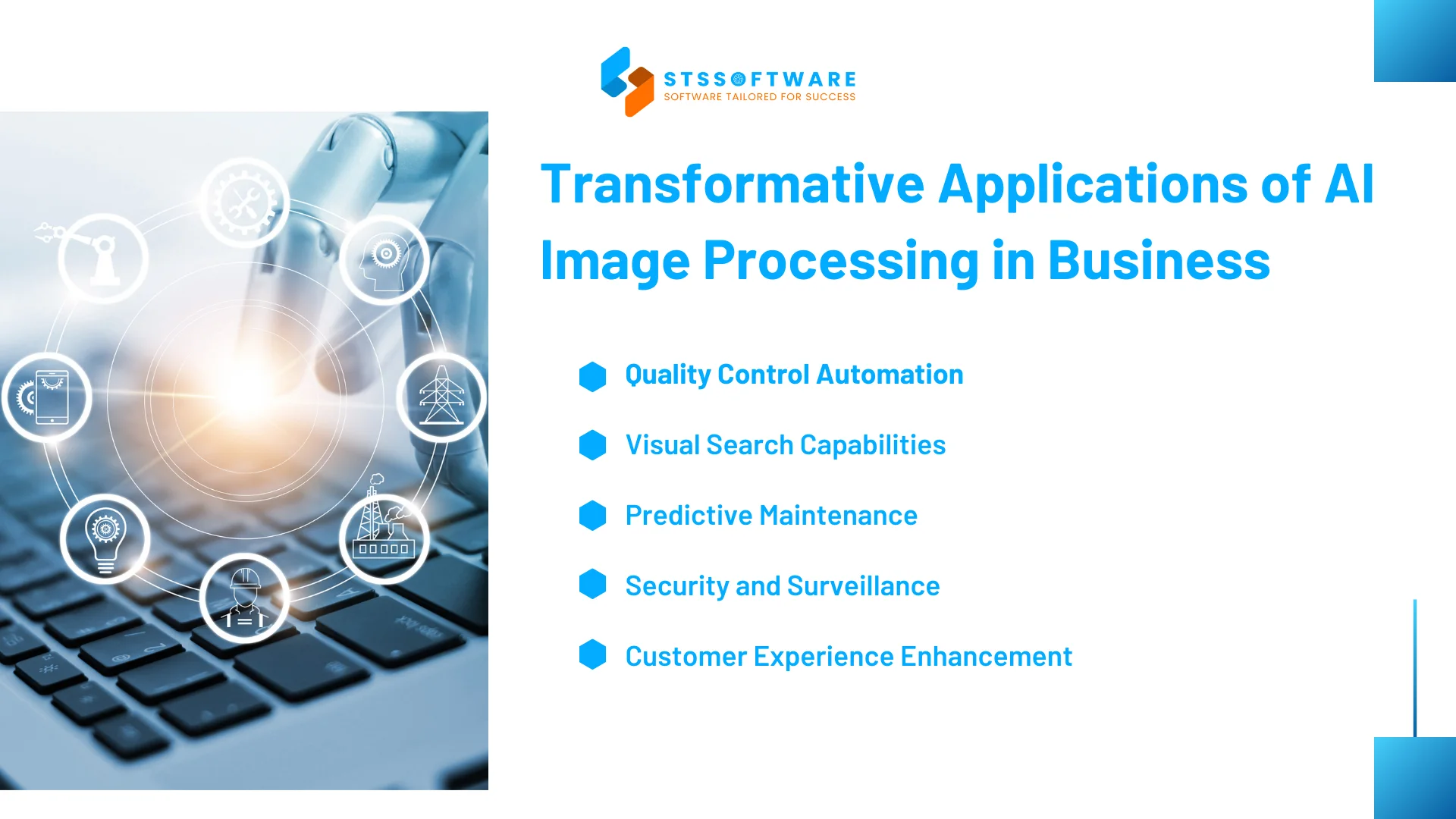
AI in image processing technology is reshaping the way businesses operate in many fields. No longer just a support tool, AI based image analysis has become a core platform to optimize costs, increase processing speed and improve decision-making efficiency. Below are 5 outstanding applications that businesses are implementing in practice:
Quality Control Automation
In the manufacturing sector, output quality control is always a costly and error-prone step if done manually. With image processing AI tools, AI-integrated camera systems can analyze each product frame in real time to detect errors such as cracks, color errors, distortions or incorrect sizes.
For example, car manufacturer BMW uses an AI system to scan the surface of the car body to detect scratches and peeling paint with up to 99% accuracy. This helps them save millions of euros each year from reducing defective products and customer complaints.
Visual Search Capabilities
In the retail and e-commerce industry, AI in image processing is used to implement image search tools. Customers only need to take or upload an image, the system will use AI based image analysis to identify and suggest similar products in the database.
For example, fashion applications such as ASOS or Zalando integrate visual search features, allowing users to find similar items with a street style photo. This not only shortens the product search journey but also increases the purchase conversion rate by more than 20%.
Predictive Maintenance
In heavy industries such as energy, aviation or manufacturing, timely equipment maintenance is a vital factor. Thanks to image processing AI tools, the system can collect and analyze images from machinery, components via cameras or drones to detect signs of wear, corrosion or abnormal temperature.
For example, GE uses drone-mounted AI systems to inspect wind turbine blades. AI-based image analysis helps detect see small cracks not perceptible by the eye at a short distance and give early maintenance warnings that would minimize the chances of breakdowns or interruptions in production.
Security and Surveillance
AI in image processing is taking traditional surveillance systems to the next level. Recognizing faces, unusual behavior, and evaluating crowd behavior in real-time makes it rapid response to threats, savings in costs from reduced human resources, and increased operational proactivity.
For example, big malls in Singapore would have AI camera surveillance to spot aberrant actions like lingering too long in areas. The image processing AI tools immediately send alerts to security teams for inspection.
Customer Experience Enhancement
Analyzing emotions, facial expressions, or in-store movement behavior helps brands personalize the experience better. AI based image analysis can analyze image data from in-store cameras to understand customers’ needs, preferences, and emotions in real time.
As shown in practice, Sephora uses image analysis technology to determine the gender, age, and emotions of customers when they enter the store. This data helps consultants make more accurate suggestions, contributing to increased satisfaction and sales.
In short, with the rapid development of technologies such as deep learning and computer vision, AI in image processing is opening a new era for business automation. Businesses that know how to exploit AI based image analysis in the right place will have a superior advantage in smart operations, cost savings, and sustainable growth.
Overcoming Implementation Challenges
Business models currently changing due to AI image processing face an uphill task with AI image processing implementation. This is primarily due to high technical requirements, initial capital investment cost, and expertise gaps. The three most common challenges, as well as some practical solutions, are as follows:
1. High Data Requirements
The effective functioning of AI image processing requires most businesses to amass and manipulate huge amounts of quality-imaged, correctly labeled data. Collection of such data is, however, usually arduous and resource intensive, especially for small businesses and those involved in industries with little data at hand.
Cited by McKinsey & Company, it has been emphasized that poor quality or insufficient amounts of input data fail to meet the expectations of more than 70 % of enterprise AI projects. The report further mentions, for example, that in critical areas like healthcare or manufacturing, the lack of diversity would cause very big effects in precision into which the systems would be counted upon for use (McKinsey – The State of AI in 2021).
2. System Integration Issues
Deploying artificial intelligence image processing is not just about installing software but also integrating with existing ERP, CRM systems or production processes. This causes difficulties when businesses use old infrastructure that is not ready for new technology.
According to Deloitte’s “State of AI in the Enterprise” report, 37% of surveyed businesses have difficulty integrating AI systems into current operating processes, due to outdated technology infrastructure or lack of compatibility with APIs of modern AI platforms.
3. Lack of human resources and expertise
AI image processing requires in-depth knowledge of deep learning, computer vision and neural networks. Recruiting the right team of skills is a real challenge – both in terms of budget and resources.
As per the report of the World Economic Forum “Future of Jobs 2023”, occupations such as AI Engineers, Data Scientists, and Deep Learning Specialists are most wanted but in very much demand. Importantly, over 60% of the surveyed businesses said they were unable to expand their AI projects just because of a lack of skilled staff (WEF – Future of Jobs Report 2023)
Recommended solutions:
- Apply synthetic data to overcome the lack of real-world data.
- Take advantage of AI-as-a-Service platforms such as Google Cloud Vision, AWS Rekognition or Azure Cognitive Services to reduce the pressure of investing in systems from the beginning.
- Collaborate with external technology partners with expertise in AI image processing to ensure effective deployment without having to internalize all the technology.
In short, although AI image processing opens up great opportunities in digital transformation, businesses need to clearly recognize the initial challenges and have an appropriate deployment strategy to maximize the benefits of this technology.
Future Trends: Where AI Image Processing Is Headed
Artificial intelligence in image processing is no longer a distant future technology – but is gradually reshaping business operations at many levels. In the coming years, AI for image processing will continue to grow strongly with the following trends:
1. Advanced real-time image processing capabilities
With the development of specialized hardware such as GPU, NPU (Neural Processing Unit), image processing AI tools can process images with almost zero latency. This opens up the possibility of wide application in areas such as smart security surveillance, autonomous vehicles, emergency medicine and logistics.
Modern AI cameras can immediately identify dangerous objects or unusual signs and trigger automatic responses – as in the smart security systems at major airports such as Heathrow (UK) or Changi (Singapore).
2. Integrating AI with IoT (AIoT) in Businesses
The combination of AI and the Internet of Things (IoT) will enable cameras, sensors, and drones to become smart image collection and analysis devices. Thanks to AI for image processing, businesses can monitor product quality, operating processes, or machine status remotely and automatically.
Electronic component manufacturing factories use image processing AI tools integrated with industrial cameras to detect microscopic defects that the human eye cannot see.
3. Advanced Image Analysis Combining NLP & Unstructured Data
Technology is gradually moving towards combining AI for image processing with natural language processing (NLP) and AI text analysis, helping businesses not only understand images but also analyze multi-dimensional contexts such as facial expressions, consumer behavior, and relationships with unstructured data.
In the retail industry, combining CCTV images with facial recognition can help predict customer behavior at the point of sale.
4. Increasing the “democratization” of AI technology
Image processing AI tools become more and more accessible via no-code and low-code platforms such as Google AutoML Vision, Amazon Rekognition, or Microsoft Azure Custom Vision. Companies would not require having a very strong technical team to train and deploy their own AI models.
This is especially beneficial to small and medium enterprises that help provide the high technology at a much lower cost than was before.
Why Choose STS Software as Your Partner for AI Image Processing
In an era where AI image processing is becoming a strategic tool to help businesses automate, optimize performance and enhance user experience, choosing the right deployment partner is a decisive factor. STS Software is proud to be a leader in developing and deploying specialized, cost-effective AI development services.
Deep expertise in AI and image processing
STS Software’s engineering team has a solid foundation in artificial intelligence, especially deep learning models and computer vision. AI based image analysis solutions are designed to accurately process complex images in many contexts such as manufacturing, healthcare, retail, logistics, etc.
Develop customized solutions according to business needs
Without applying a stereotyped model, STS Software focuses on building AI image processing solutions that are “tailored” according to the actual processes and data of each business. This ensures superior performance and flexible scalability over time.
Successful implementation projects
STS has accompanied many customers in projects from visual defect detection to customer behavior analysis via smart cameras, helping to reduce operating costs and increase accuracy in decision making.
Commitment to long-term companionship and post-implementation support
STS not only provides technology solutions but also accompanies businesses throughout – from consulting, implementation, internal training to long-term technical support, ensuring that customers always maximize the value of ai based image analysis.
Conclusion
AI image processing is opening a new era for business operations, from automating quality control, optimizing maintenance to enhancing customer experience. With the ability to analyze images quickly, accurately and intelligently, businesses can save time, reduce costs and make decisions more effectively than ever.
However, to fully exploit this potential, cooperating with a technology partner with experience in developing and deploying ai based image analysis is a key factor. It is not just a technology solution, but a solid foundation for sustainable and breakthrough development in the future.
Contact STS Software now to get advice on an image processing AI application strategy that suits your business model – and be ready to lead the digital transformation race!



